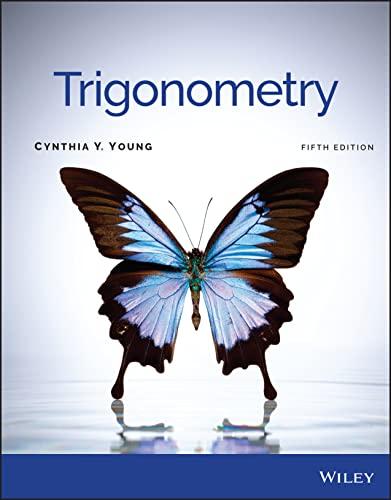Question
A school board is interested in determining whether elementary students' level of numerical skills is different between in-person and online schools. The school board randomly
A school board is interested in determining whether elementary students' level of numerical skills is different between in-person and online schools. The school board randomly selects 20 grade 5 students who participated in school in person and 20 grade 5 students who participated in virtual school. All students take a test in mathematics. These are the descriptive statistics of the results:
In-Person Virtual
Mean Score 85 83
Standard Deviation 20 15
Based on this information, answer the following question. Suppose normality assumptions are warranted. (Don't bother with providing too much explanation, since I can likely connect the dots).
Question #1: We would like to test if in-person and virtual schools are different in the level of numerical skills of their elementary students. Which one is the appropriate hypothesis test?
Question #2: IfIrepresents the mean math score of grade 5 in-person students and Vrepresents the mean math score of grade 5 virtual students, what are the appropriate hypotheses that the school board should consider?
Question #3: Suppose students in both in-person and virtual schools have a similar background. The school board suggests that the variance of the math scores is the same in the two populations. Calculate the pooled standard deviation.
Question #4: Regardless of your answer to question #3, supposed the pooled standard deviation is 18. Assuming equal variances, what is the standard error of the difference between the mean math score of in-person students and the mean math score of virtual students?
Question #5: Assume that the standard error of the difference between the mean math scores is 6. What is the value of the appropriate test statistic?
Question #6: Again, assume that the standard error of the difference between the mean math scores is 6. Using a 95% confidence interval, what is the corresponding appropriate test for this study?
Question #7: Assume that the true 95% confidence interval for the difference in mean scores is (-9.31, 13.31). What statement is true?
- We reject the null hypothesis as the confidence interval captures 2 (the difference between 83 and 85).
- We fail to reject the null hypothesis as the confidence interval captures zero.
- We fail to reject the null hypothesis as the confidence interval captures 2 (the differencebetween 83 and 85).
- We reject the null hypothesis as the confidence interval captures zero.
Question #8: The school board realizes that students attending virtual schools are more self-motivated and thus concludes that the equal variance assumption is not warranted. What would it change in the analysis?
Question #9: In light of new information, now suppose the histogram of math scores of in-person students and virtual classes are Bimodal. What would you choose for hypothesis testing?
Question #10: Suppose the school board wants to determine if the level of math skills of students in virtual classes has decreased. Therefore, they collect the grade 4 math test scores for exactly the same students who took the test in grade 5 in a virtual class. What are the appropriate hypotheses in this case?
Question #11: At a 5% significance level, what is the appropriate confidence interval for testing the hypothesis from question 38 above?
Question #12: What happens if the histogram of the differences in math scores isNOTNormal? Just provide the answer without explanation.
- We can conduct the paired t-test and then check the normal probability plot. Only then we can decide what to do.
- The sample size is 20, which is large enough to assume normality. So, we should not have checked the histogram.
- We need to consider a Wilcoxon signed-rank test to do hypothesis testing.
- We need to consider a Wilcoxon rank-sum test to do hypothesis testing.
- Any non-parametric test would be suitable as we have two samples and both Wilcoxon signed-rank and Wilcoxon rank-sum tests work with two samples.
Step by Step Solution
There are 3 Steps involved in it
Step: 1

Get Instant Access to Expert-Tailored Solutions
See step-by-step solutions with expert insights and AI powered tools for academic success
Step: 2

Step: 3

Ace Your Homework with AI
Get the answers you need in no time with our AI-driven, step-by-step assistance
Get Started


